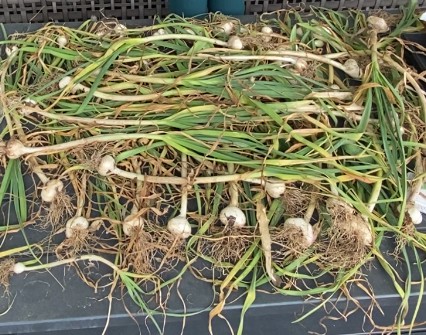Last Updated on September 12, 2024 by Homegrown Florida
This post may contain affiliate links. Read full disclosure here.
If you’re looking to grow a garden staple crop that not only feeds you in abundance but also nourishes your soil and can be preserved for years without any special equipment, I’ve got just the plant for you—Puerto Rican black beans. These little gems have become one of my favorite crops, especially for those of us gardening in the hot, challenging climates of Florida or the Southern regions. Let me tell you why these beans are a must-have in your garden.
What Makes Puerto Rican Black Beans So Special?
Technically, the Puerto Rican black bean is a type of cowpea, though you wouldn’t know it by looking at or tasting them. Unlike the more common black-eyed peas, these beans look and taste just like the regular black beans you’d find in your kitchen pantry. They’re an incredible addition, especially when the heat makes it tough for other plants to thrive, making them the perfect garden staple crop for summer.

I started my plants in March, but here’s the great news—you can plant them as late as August. Whether you want to harvest a ton of beans or use them as a cover crop to enrich your soil, these beans are versatile enough to meet your needs.
Growing Puerto Rican Black Beans
Puerto Rican black beans do take a while to get going—they can linger in the seedling stage for about four to six weeks. But once they’re past that slow start, they take off like you wouldn’t believe. They love full sun and can handle a bit of shade, but they’ll truly thrive if you give them 8 to 12 hours of sunlight daily.

One thing to note: these beans are vigorous climbers. My arch trellis is doing okay, but the A-frame trellis is starting to lean under the weight of the plant. If you’re short on garden space, don’t worry! These beans can climb just about anything—a palm tree, wooden fence, chain-link fence, you name it. They’re relentless climbers and grow fast, so be ready to give them plenty of room to sprawl.
Caring for Puerto Rican Black Beans
Here’s the best part—caring for these beans is incredibly easy. Since they’re part of the legume family, they don’t need any fertilizer. They fix their own nitrogen, which means you can skip the fertilizer altogether. If you’re growing legumes for the first time, you might want to use an inoculant to help get the right bacteria into your soil. Just sprinkle the inoculant powder onto the soil where you plant the bean seeds and water it in. Thats all you have to do. But if you’ve grown beans or peas before in that area, you likely won’t need it.

When it comes to watering, I do give them a little extra attention while they’re young—usually watering them twice a week. But once they get going, I let the Florida rain take care of the rest. They’re practically self-sufficient, even mulching themselves with their thick foliage.
Pests and Diseases? No Problem!

Now, these beans do attract a lot of pests—I’m talking everything from grasshoppers to aphids to wasps. But the amazing thing is that the plants just keep growing. They outpace the damage that the pests make so treatment really isn’t necessary. Even with a bit of rust disease i’m experiencing on the leaves, the plants continue to thrive and produce beans in abundance.
Harvesting and Preserving Your Beans

Harvesting this garden staple crop of Puerto Rican black beans is very simple. When the pods turn brown and crunchy, they’re ready to pick. I usually head out every couple of days to collect the beans because if you leave them on the plant too long, they can start to mold in our humid weather. Once harvested, all you need to do is shell them, lay them out in a single layer to let them dry completely (just to be sure there’s no moisture left), and then store them in glass jars. These beans can last up to five years, making them a fantastic survival crop.
Where to Get Your Seeds
Puerto Rican black beans aren’t something you’ll find at your typical garden center. I’ve had the best luck finding them at small, specialized sellers like The Urban Harvest, Cody Cove Farms, or Jerras Garden. While you are there, check out all the other unique varieties they offer for warm weather climates.
Well, I’ve got a lot of harvesting to do, so I’ll leave you with that. I hope this post inspires you to give Puerto Rican black beans a try in your own garden. They’re easy to grow, incredibly productive, and a joy to have around. Happy gardening!




